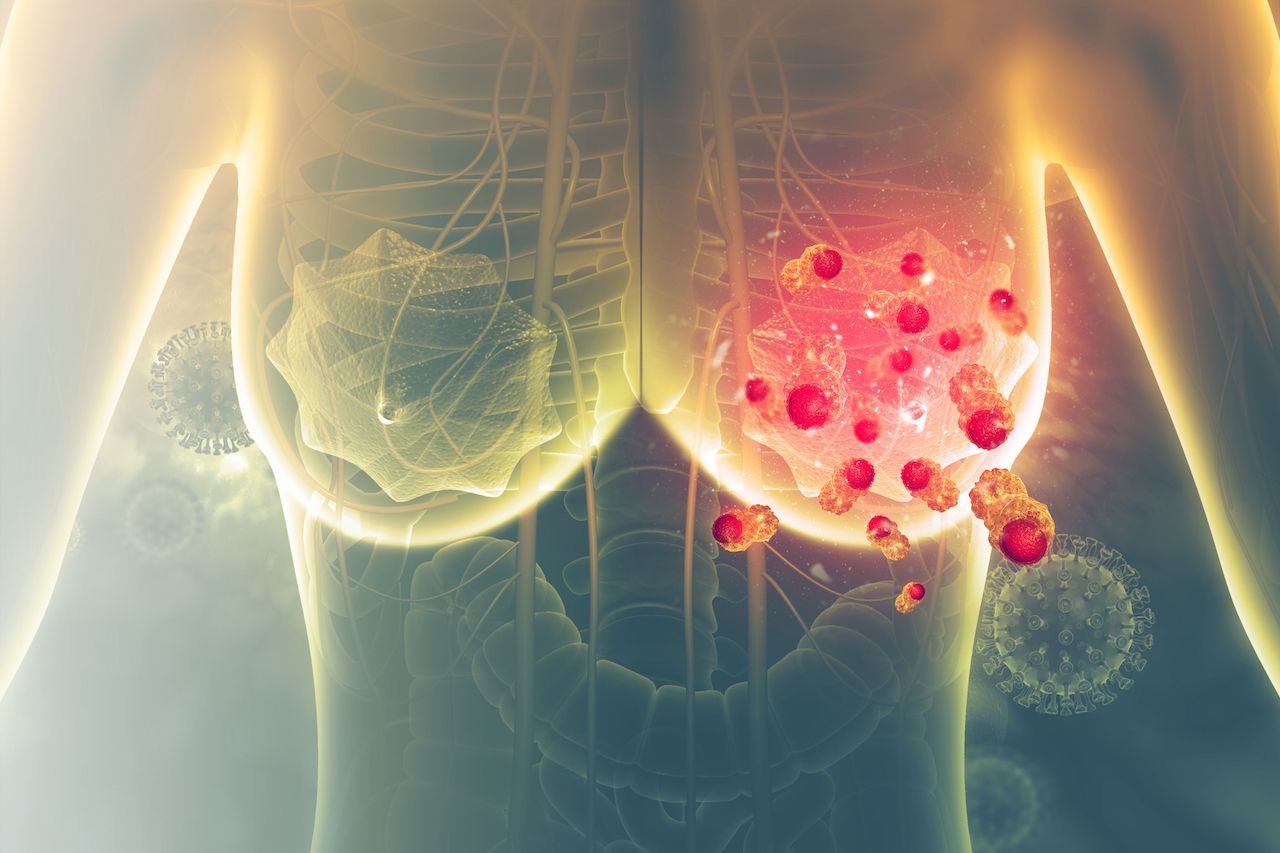Article
Black Women With Insulin Resistance May Have Worse Breast Cancer Prognosis
Author(s):
Elevated insulin levels, which have been shown to promote tumor growth, due to insulin resistance may be linked to a greater prevalence of invasive breast cancer among black women compared with white women.
Elevated circulating insulin levels (ie, hyperinsulinemia), which have been shown to promote tumor growth, due to insulin resistance (IR) may be linked to a greater prevalence of invasive breast cancer among black women compared with white women, reported study findings in Breast Cancer Research.
Black women were also shown to have a higher ratio of IR, a metabolic syndrome, to insulin-like growth factor receptor (IGF-1R) expression. “In breast cancer, the metabolic syndrome has been associated with an increased risk of developing cancer, and a worse prognosis,” the study authors noted.
However, because extensive research has not been carried out on the connection between hyperinsulinemia and tumor IR expression, the authors conducted their study. They excluded women with type 2 diabetes (T2D) so they could evaluate the homeostatic model assessment of insulin resistance (HOMA-IR) without results being influenced by medications the women may have been taking for their T2D.
Their cross-sectional study enrolled 1515 self-identified black (17%; mean [SD] age of 58.1 [13.2] years) and white women (83%; mean [SD] age, 58.3 [12.3] years) from 10 hospitals in New York, New Jersey, Connecticut, Maryland, and Michigan, all of whom had a recent diagnosis of primary invasive breast cancer. The women were surveyed on their risk factors for breast cancer and metabolic syndrome, fasting blood, and tissue samples. Additional data were collected on their smoking history, alcohol intake, breast cancer screening history, diet, physical activity, education, income, and health insurance status.
Overall results show that black women had greater rates of the following measures compared with white women:
- Metabolic syndrome: 40% vs 20% (P <.0001)
- HOMA-IR: 1.9 (1.2) vs 1.3 (1.4) (P = .0005)
- Poor breast cancer prognosis: 28% vs 15% (P = .004)
- IR tumor expression: 79% vs 52% (P = .004)
The authors defined metabolic syndrome as having 3 or more of the following criteria:
- Waist circumference >88cm
- triglycerides ≥150 mg/dL or on treatment for hypertriglyceridemia
- High-density lipoprotein cholesterol <50 mg/dL
- Fasting Glucose >100 mg/dL
- Systolic blood pressure >130 mm Hg or diastolic blood pressure >85 mm Hg or being treated for hypertension
Additional results indicate positive correlations for all of the women between HOMA-IR and Nottingham Prognostic Index (NPI) score (r = 0.1; P = .02), which is used to indicate outcome following breast cancer surgery, as well as a greater IR/IGF-1R and mean (SD) NPI score:
- IR/IGF-1R >1: 4.2 (0.8)
- IR/IGF-1R = 1: 3.9 (0.8)
- IR/IGF-1R < 1: 3.5 (1.0; P <.0001)
However, “HOMA-IR significantly mediated the association between black race and poor prognosis (β = 0.04; 95% CI, 0.005-0.009; P= .002).
Black women also had higher rates of annual income below $75,000 (75% vs 31%; P < .0001); less than a college education (38% vs 14%; P < .0001); Charlson Comorbidity Index of 1 or more (68% vs 53%; P = .01); obesity (47% vs 19%; P < .0001); and sedentary lifestyle (60% vs 47%; P = .02).
For tumor characteristics, more black than white women (28% vs 15%; P = .004) had an NPI score greater than 4.4 and tumors with high IR expression (79% vs 52%; P = .004). Black women also had more occurrences of triple-negative breast cancer (16% vs 6%; P = .01), and they had a screening mammogram less often (20% vs 22%; P = .6) in the 2 years before their breast cancer diagnosis.
The authors noted how previous study results show that racial disparities in IR may be due to insulin metabolism difference between African American and European American women, because of reduced hepatic insulin clearance in the former group, ultimately leading to “long-term exposure to high circulating insulin levels.”
“While the focus of our study was to examine the link between insulin resistance and disparities in prognosis in women with newly diagnosed breast cancer, we acknowledge that this is certainly just one of a number of complex factors that contribute to racial disparities in breast cancer prognosis,” the authors concluded.
Study limitations include the cross-sectional design, incomplete data on breast cancer risk factors, and geographical region link to obesity,
Future studies need to focus on if lowering insulin levels or targeting IR signaling can improve racial disparities in breast cancer survival.
Reference
Gallagher EJ, Fei K, Feldman SM, et al. Insulin resistance contributes to racial disparities in breast cancer prognosis in US women. Breast Cancer Res. Published online May 12. doi:10.1186/s13058-020-01281-y





